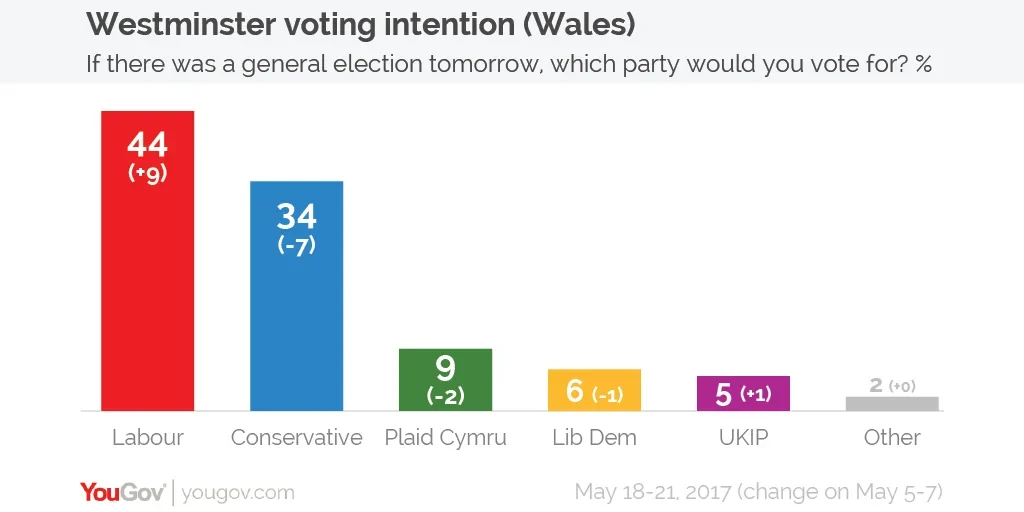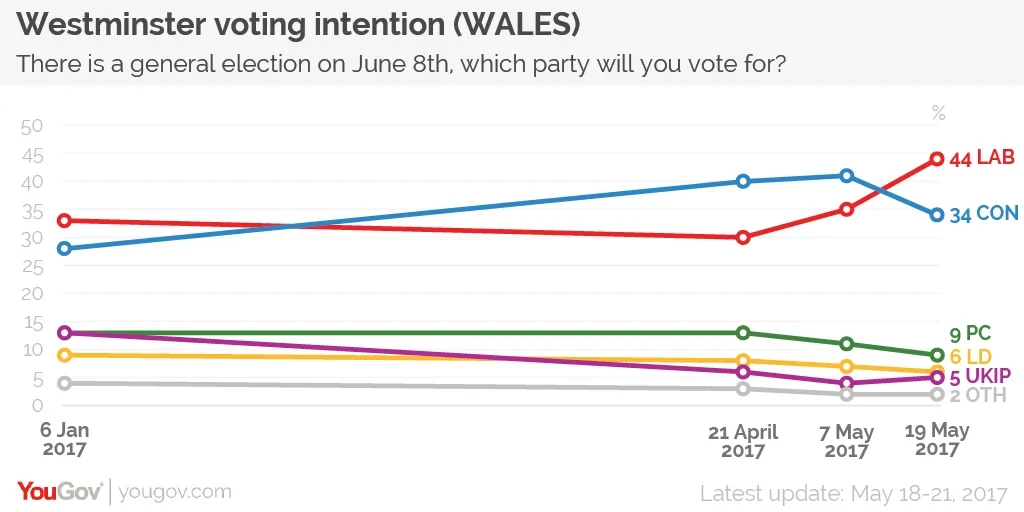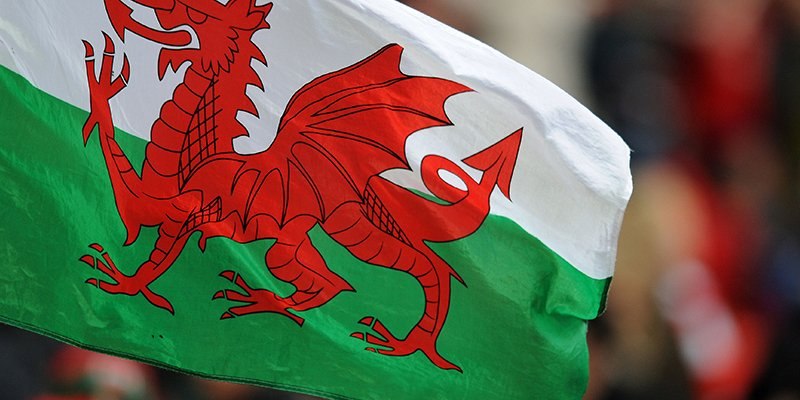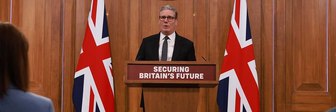Latest YouGov Westminster voting intention figures for Wales
Labour retake the lead in Wales - 10 points ahead of the Conservatives and are now at their highest vote share since 2013. There has been a lot of movement in our Welsh polls following Theresa May’s decision to go to the country. In April, immediately following the announcement, the Conservatives took the lead in Wales for the first time on record. Now, a month into the campaign, Labour have regained the lead.

While these shifts in public opinion could be seen as fairly erratic, the changes are not that out of the ordinary, particularly given the unusual circumstances we find ourselves in. As ever, the first thing to point out is that we should always take caution when looking at individual polls in isolation – it is often far better to focus on the trends over time. All polls are subject to a margin of error and so it is possible that our most recent poll, or indeed previous ones, was on the edge of these margins. And in every poll there is always the possibility of some sample fluctuation.
Secondly, it is important to note that as we don’t have the luxury of conducting polls in Wales as often as our GB-wide ones (it is two weeks since our last). But if we place this latest Wales result against the movement in the national polls during that time, we see that it is pretty much in line with what we have seen across Britain as a whole.
Since the last Welsh poll, the Conservative lead across Britain has fallen from 19 points to 9 points. Wales has swung a little more to Labour than the rest of the UK, but given the party’s historical dominance within Wales, this is possibly not surprising given there are more former Labour voters for them to get back on side.

Thirdly, the snap election means that people have to make up their mind in a much shorter period of time than usual. Given that each of the last nine parliaments have been four or five years, voters are used to the luxury of an extended campaign to make an informed decision over a longer period meaning we are usually less likely to see notable changes in vote share in a short space of time. In this election campaign, there has been a fair bit of flux.
Immediately after the election was announced, 15% of 2015 Labour voters told us they did not know how they would vote. That number has now halved to 8% with most of these people deciding to stick with the party. In April, 69% of 2015 Labour voters said they planned to vote Labour again, that number is now up to 87%. Labour seems to be pulling its vote together.
The fourth area to look at is UKIP. The party saw their vote share plummet not only in Wales but also across Britain immediately after the election was called. Since then, their vote has held firm at around 5% in Wales, meaning it is holding on to about a third of their 2015 share.
While in April virtually all of the 2015 UKIP switchers were moving to Conservative (63%) with only 2% opting for Labour, this split has now narrowed to 55% Conservative, 9% Labour. The majority are still opting for the Tories, significantly contributing to their vote share being 7 points above what they achieved in 2015. However, there is now also evidence that Labour may be reaching some UKIP voters who were traditionally Labour in the past.
The fifth thing to note is that votes are moving from Plaid Cymru and the Liberal Democrats. Both of these parties have seen their vote shares steadily decline over our last three polls. When asked how they’d vote in a Welsh Assembly election, Plaid do twice as well as in the Westminster vote. This is nothing new: the nationalist party consistently do better in devolved elections than general elections.
What is notable, however, is that their Assembly vote has held up since the last poll (20%) while their Westminster vote has fallen (11% to 9%). Over a quarter of those who say they would vote Plaid if there was an Assembly election say they plan to vote Labour in June, compared to only 15% from this group in our last poll. This suggests that there could be some tactical voting taking place as voters begin to assess the chances of each party in their local constituency.
One more intricacy in the data is the level of votes Labour are gaining directly from the Conservatives. In our last poll, 2% of 2015 Conservative voters suggested they would now vote Labour compared to 7% now. Reversing this, in our latest poll only 5% of Labour 2015 voters say they will vote Conservative, at the start of May this figure was 10%.
Both the Labour and Conservative manifestos were released in the time between our latest Welsh polls and so it is possible that they may have contributed to not only the change in headline voting figures but also to some direct switching from Conservative to Labour. It is unclear however, whether any change directly in response to manifestos would be lasting or not.
Finally, last week former leader of the Welsh Assembly Rhodri Morgan passed away. The Labour politician was well respected amongst peers and the Welsh public alike and was seen as a key figure in Labours’ success in Wales during the first decade of the 21st century. While it is unlikely that this would have a direct impact on voting intention, it could have contributed to a narrative around Labour’s perceived performance in Wales.
So can we expect more movement in Wales before people head to the polls? Possibly. Possibly not. On the one hand, we may now be close enough to the election that most people have made up their mind and are less likely to switch again. On the other hand, to coin the clichéd phrase “a week is a long time in politics” and with so much unfamiliar ground, it would come as no surprise if we see more churn before June the 8th.
Photo: PA














